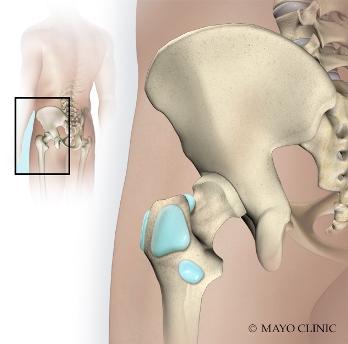Recent Posts
-
 Patient StoriesA lifesaver saved: An EMS veteran’s journey from rescue to recoveryNovember 14, 2025
Patient StoriesA lifesaver saved: An EMS veteran’s journey from rescue to recoveryNovember 14, 2025 -

-

Blood platelet therapy relieves Lynda Bird's hip pain

Chronic pain was something that Lynda Bird thought she would need to live with.
"I have had hip pain for many years," says Lynda. "I thought it was connected to my back pain."
After years of pain, she had spinal fusion surgery to permanently connect two vertebrae in her back to eliminate back pain. While she describes her back surgery as a miracle, her intense hip pain continued.
"I couldn't lie on my left side, or sit or stand too long," says the 76-year-old rural Boyceville, Wisconsin, resident. "I walked with quite a limp and not very far. If I went outside, I needed to take the walker or electric scooter. And riding in a car for a long time was really hard."

Her neurosurgeon referred Lynda to his colleague, Lang Jacobson, M.D., in the Physical Medicine & Rehabilitation Department. After talking with Lynda about her pain and performing a physical exam, Dr. Jacobson determined that her pain was caused by greater trochanter bursitis. Bursae are small fluid-filled sacs that reduce friction between moving parts in body's joints. Greater trochanter bursitis occurs when one or more of the bursae sacs in the hip joint are inflamed or irritated.
"Hip bursitis is common, and more women are affected than men by a ratio of 4 to 1," says Dr. Jacobson. "About 10% to 15% of people over age 50 struggle with this condition. In Lynda's case, it is likely due to inflammation from tendinitis and mechanical imbalance in her hip."
After trying medication, steroid injections and physical therapy, Dr. Jacobson recommended a regenerative medicine treatment called platelet rich plasma therapy.
"This treatment option utilizes the anti-inflammatory factors in your own blood to decrease inflammation. This option has fewer side effects and is often more potent than other types of injections like steroid injections," says Dr. Jacobson. "It is one of many tools that Physical Medicine & Rehabilitation providers use to promote function and activity."
Platelet rich plasma injections, which can bring relief for patients dealing with soft tissue injuries, has been an option for Mayo Clinic Health System patients for a few years. In addition to treating greater trochanter bursitis, it has been used to treat knee osteoarthritis and tennis elbow.
At first, Lynda was hesitant to try platelet rich plasma therapy, but she ultimately decided it was worth a shot.
"I didn't know at first. I kept thinking about it and talked about it with my husband," says Lynda. "I felt like I didn't have anything to lose, and nothing else seemed to work so far. If it gave me some relief, it would be worth it."
Lynda arrived at the clinic for her outpatient treatment in December 2020. First, she had blood drawn from her arm, which then was processed to concentrate her platelets. Platelets, which are colorless blood cells that help blood clot, are critical to growth and healing. Finally, Lynda's platelets were injected directly into her hip bursae. Dr. Jacobson used ultrasound imaging to ensure its precise placement into the inflamed bursae.
"It could not have been any more comfortable or relaxing," says Lynda. "The staff was amazing. We just visited through it. They were very sincere and answered my questions. I put my trust totally in them."
After the treatment, Lynda returned home to rest, and she hoped for good results. She recalls that her symptoms improved slowly over a few weeks. "The first week, I thought, 'Well, I tried it,' but then I remembered that they told me it could take a few weeks. That is what happened for me," she says.
Dr. Jacobson explains that this is because platelet rich plasma can take time to decrease inflammation and allow for healing.
"Most patients have significant relief within the first week or two. However, the effect of platelet rich plasma continues for months afterward," says Dr. Jacobson. "Most patients can gradually return to activity over the 30 days following the procedure."
During this time, Lynda returned to activity with the guidance of physical therapy prescribed by Dr. Jacobson and started to experience more pain relief.
"Now I can sit longer, stand longer and lie on my side," says Lynda. "It feels so good to move again. I can walk down and back up my driveway to get the mail without having to stop. I couldn't do that before."
Dr. Jacobson credits Lynda's determination for her progress. "She is a motivated and active person who was only limited by her hip pain when we saw her," he says. "Her excellent participation in therapy after the procedure and goal to remain active contributed to her success."
With the pain behind her, Lynda is setting goals for the spring. The first is to take a road trip to visit family members when it is safe to do so due to COVID-19 guidelines. "We have a big family, and we are used to being together. I've missed them," she says.
Lynda's second goal is start riding bicycle again. "I love to ride a bike, but the last time I was on one was about 10 years ago," she says. "My husband bought me an electric bike for Christmas, and I feel like I could do it right now. I'm really excited about getting back out there."



